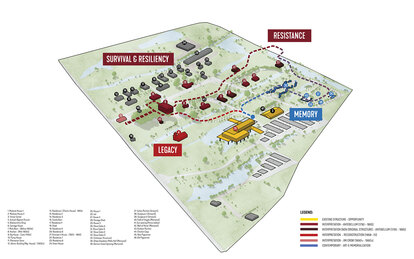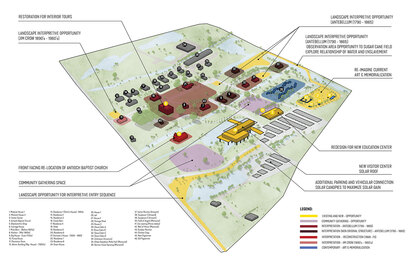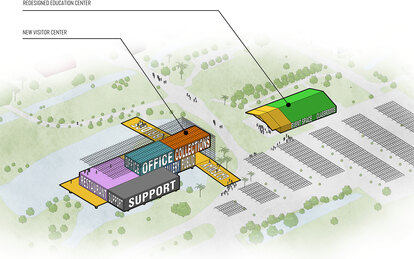Whitney Plantation Comprehensive Master Plan
A comprehensive master plan builds upon the important mission of this historic southern plantation, enhancing the visitor experience and honoring the authentic narratives that illustrate the traumatic yet resilient lives and legacies of enslaved persons in America.
Client
Whitney Plantation
Location
Wallace, Louisiana
Markets/Services
Cultural, Cultural Landscapes, Cultural Master Plans, Campus Planning, Visitor Centers
Size
45 acres
Whitney Plantation is a non-profit museum uniquely dedicated to telling the story of enslavement from the point of view of enslaved persons. Located in the Mississippi River bottomlands west of New Orleans, Whitney Plantation operated as a sugar, indigo and rice plantation from 1752 to 1975, enslaving more than 100 people at the height of its production in the mid-1800s. The Whitney Institute purchased the 170-acre site and its historic buildings in 1999, and after 15 years of restoration and research, opened it to the public in 2014. To continue expanding and improving its interpretation and restoration efforts, the Institute partnered with SmithGroup to develop its first comprehensive plan.
Whitney Plantation is layered with complexities, a place of learning that reckons with historical traumas and honors the legacies of the oppressed. The comprehensive plan provides recommendations for how to recalibrate the visitor experience—recognizing that its visitors range from academic scholars to schoolchildren—conveying the plantation’s true history in an authentic, honorable and logical way. The plan also addresses how to improve the climate resilience of the site and the preservation of its historic assets, exploring how Whitney can further build on its role as a research center and community resource. The plan’s short-, medium-, and long-term goals establish a clear path forward for Whitney Plantation as an adaptable, viable campus that can continue to fulfill its invaluable mission.
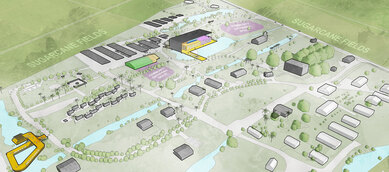
An overarching recommendation of the comprehensive plan is streamlining how the Whitney Plantation story unfolds as visitors move through the site. In addition to the slave cabins and other structures original to the plantation, several other historic buildings from different eras had been added to the grounds; to build a more coherent narrative, the plan recommends some of these structures be moved, adjusting how each is emphasized as part of the overall narrative. The plan establishes chronological interpretive zones, exploring each zone around the themes of Survival and Resilience, Resistance, Memorialization and Legacy. Notably, the “big house” of the plantation owner—so often showcased for its opulence—is ancillary to the story. Here, instead, the Antioch Baptist Church is given prominence as a poetic symbol of strength and unity.
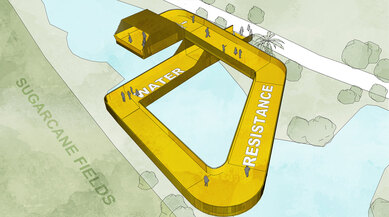
A proposed overlook would rise above the edge of the adjacent sugar cane fields, giving a sense of the desolate and dehumanizing conditions the enslaved workers endured.
The plan proposes phased transformation of the visitor experience starting with strategic improvements to the existing visitor center to enhance comfort, address congestion at the entrance and expand capacity for community programming. In the longer term, a new sustainable visitor center would establish Whitney as a hub for research, education and cultural engagement, with expanded exhibit galleries, event space, food service, a research library and hoteling for visiting scholars. Long-term measures emphasize Whitney Plantation’s role not only as a museum, but as a vital resource for the community.
Whitney Plantation aims to prioritize care of its historically significant structures from further deterioration, and the comprehensive master plan outlines parameters for their preservation, restoration, rehabilitation and reconstruction. On a broader scale, recommended climate resilience strategies include anchoring systems for structural integrity to mitigate wind damage, storm-resilient landscaping and stormwater management, elevating new structures above the floodplain, and incorporating photovoltaic arrays that can power the campus and generate revenue. By embracing resilient strategies for the future, Whitney Plantation ensures that its truths can continue to be told.
